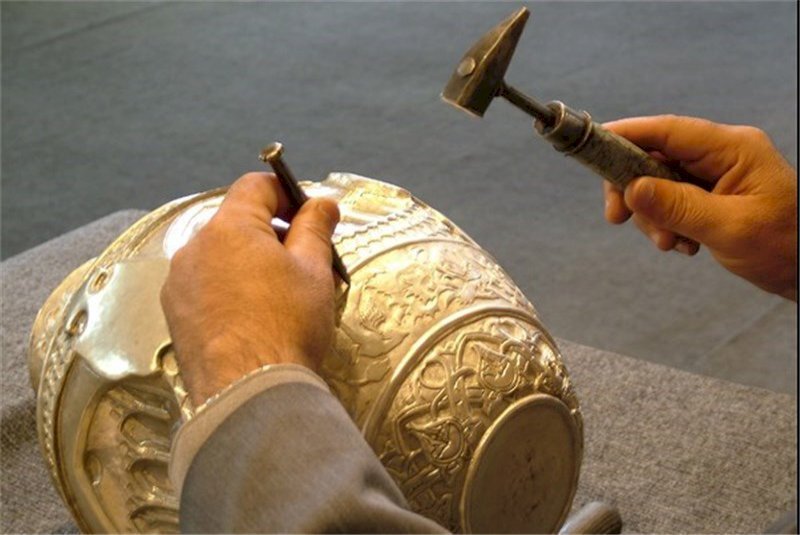Handicraft course to help create jobs for inmates

TEHRAN – A training course in the field of toreutics is currently being held in a prison in the city of Abhar, Zanjan province, Abhar’s tourism chief has said.
The course aims at providing job opportunities for the prisoners after their release as well as motivating them and promoting handicraft fields as sources of income, Davud Abian explained on Wednesday.
Prisoners should not fall behind in their skills development during their prison sentences, as this is one of the ways in which they can be empowered, the official added.
Last August, Zanjan’s deputy provincial tourism chief Elnaz Khodaifard announced that prisons across the northwestern province have offered handicraft training courses in a bid to empower the inmates.
The courses consisted of practical workshops in the fields of leatherwork, traditional jewelry, as well as cutting precious and semi-precious stones, she explained.
The courses, which have been held by the experienced handicrafts masters, are also intended to generate employment for inmates in the post-prison period and become a source of income for them, the official mentioned.
Tourism ministry helps empower inmates
In October 2020, the Ministry of Cultural Heritage, Tourism, and Handicrafts signed a memorandum of understanding with the Prisons, Security, and Corrective Measures Organization to create jobs and make income for prisoners.
The MOU also aimed at implementing special educational and promotional programs, identifying talented prisoners, and improving their social status.
The former deputy tourism minister Pouya Mahmoudian said that handicraft products made by prisoners have been displayed in various exhibitions, and the income generated from selling these products has been returned to the prisoners and their families.
With 14 entries, Iran ranks first globally for the number of cities and villages registered by the World Crafts Council, as China with seven entries, Chile with four, and India with three ones come next. For instance, Shiraz is named a “world city of [diverse] handicrafts”, Malayer is a global hub for woodcarving and carved-wood furniture, while Zanjan has gained the title of a “world city of filigree”.
In addition, the ancient city of Shiraz has been chosen to host the 39th General Assembly of the World Crafts Council-Asia Pacific Region (WCC-APR) in May 2023. Shiraz has a remarkable amount of handicraft pioneers. With an average age of 70, some of these pioneers are still active at their workshops. The occupational records of about 100 pioneers are collected and are annually praised by the custodians of the WCC General Office.
Available data compiled by the Ministry of Cultural Heritage, Tourism, and Handicrafts suggests the value of Iran’s handicrafts exports stood at $120 million during the first eleven months of the past Iranian calendar year 1399 (March 20, 2020 – February 18, 2021), Mehr reported. The country’s handicrafts exports slumped during the mentioned months in comparison to the same period last a year earlier due to the damage the coronavirus pandemic has inflicted on global trade.
The Islamic Republic exported $427 million worth of handicrafts during the first eleven months of the calendar year 1398. Of the figure, some $190 million was earned via suitcase trade (allowed for customs-free and tax-free transfer) through 20 provinces, according to data compiled by the Ministry of Cultural Heritage, Tourism and Handicrafts. Ceramics, pottery vessels, handwoven cloths as well as personal ornamentations with precious and semi-precious gemstones are traditionally exported to Iraq, Afghanistan, Germany, the U.S., the UK, and other countries.
ABU/MG
Leave a Comment